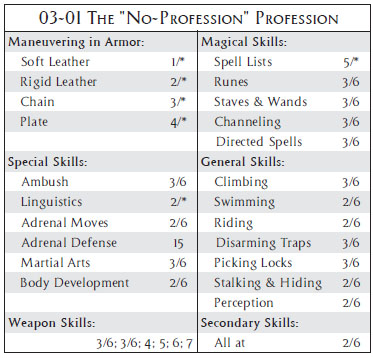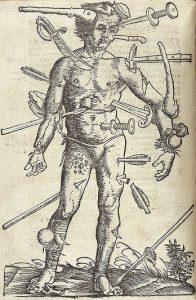It’s been a while since I blogged about Channeling, so I thought I would revisit one topic and discuss another: Invocation and Sanctification. As I’ve discussed, the Channeling Realm raises a lot of issues about setting, spell access and the role of Dieties that aren’t present in the more agnostic realms of Essence and Mentalism. That’s one of the reasons that Peter and others have just eliminated the Channeling Realm and rolled it into Essence. Again, this is really driven by the metaphysical underpinnings of the setting.
Shadow World, however, does have an established pantheon to connect to the Channeling Realm and Rolemaster suggests that Channeling spells are “passed” to the spellcaster, or at the very least, a god gives tacit approval for spellcasting of higher level spells. This raises a host of issues: the behavior of the caster, their role in the religion, the difference between “Clerics” and other members of a religion.
For example, members of a religion could be broken down to a number of types–here are just a few examples:
- Follower. A regular person that believes/follows a specific gods and attends the local temple/church. Should/could a follower get access to Channeling spells? Maybe low level Open lists?
- Administrators. A religion doesn’t run itself, and high level “management” may not actual perform ceremonies or other priestly functions, but are still elevated worshipers. Should they have Channeling spells?
- Priests. When we think of Priests/Clerics in RPGs we think of travelling adventurers representing their gods, not Clergy that stay in a church or temple and perform religious ceremonies and “tend to the flock”. If we make that distinction, RPG Clerics are more “Pilgrims” than “Clergy”, and as such should have different types of spell lists.
- Monks. Devout, monastic followers of a god are typically represented as martial artists, but religious monks could be scholars, seers, astrologers as well.
- Holy Warriors. Paladins are the common trope, but Holy Warrior could be any warrior granted special powers by the God.
- Chosen. A God could bestow or grant powers to any follower or believer in return for obedience. These powers will probably depend on the task or purpose.
So what does all this mean? Channeling spells could be granted to a variety of worshipers based on their role in the church and the needs of the God. This a very different criteria than standard RM spell acquisition.
Given all that, we utilize two other aspects of Channeling.
Invocation. It seems apparent that any follower should be able to pray to their god for aid. This is no different than an athlete whispering a quick prayer or plea before a game or challenge. This might be a general prayer or a frantic call in a dire situation and IS NOT a spellcasting. Of course, there is no guarantee a God will respond, and if they do, what that response looks like! Leaving it up to a GM is too much a deux ex machine–an easy way to bail players out of a bad situation. That’s why I use this CHART and also further guidelines based on the various Kulthean gods. The major factors are the devoutness of a character, the personality of the god, and the frequency of such pleas.
Sanctification. The second aspect of Channeling that we use is the concept of “Blessing” a holy place; making it sacred to a particular god. Mostly this is done at holy temples, churches and shrines. Sanctifying a place does several things: it allows easier casting/praying for followers of the specific God and it makes it harder for followers of opposing gods to cast spells in a sanctified area.
Here is an example of a Sanctify spell from BASiL:
7. Sanctify I – This spell will make an area/altar/shrine “Holy”. The caster will recieve +10 to Spell Casting, Rituals or Invocations, and followers is the area will receive the benefits of Bless I and Prayer I. The spell must be cast once/day/lvl to prepare the area. Caster can only have 1 Sanctified location at a time.
Invocation gives players a mechanism to relate to their chosen Diety that impacts gameplay. Sanctified areas can dramatically increase the power of Clerics in their own temples and greatly reduce the power of others on the same ground. Both, can add depth to your Channeling players in your Shadow World adventures





 A couple of weeks ago I mentioned Dyson’s Dodecahedron as a great source of maps. Today I thought I would mention Lloyd Neill’s occasional Death and Dismemberment blog (
A couple of weeks ago I mentioned Dyson’s Dodecahedron as a great source of maps. Today I thought I would mention Lloyd Neill’s occasional Death and Dismemberment blog (


